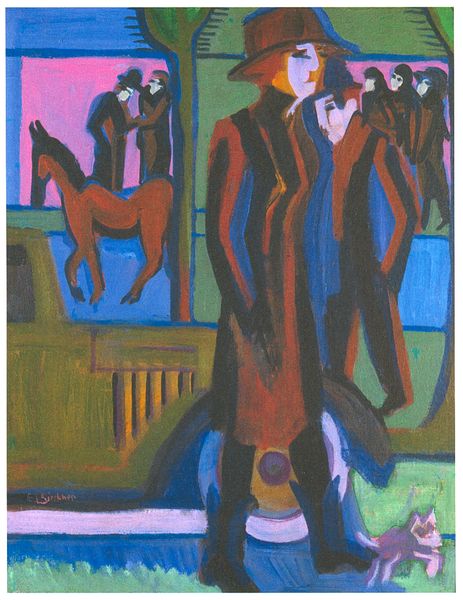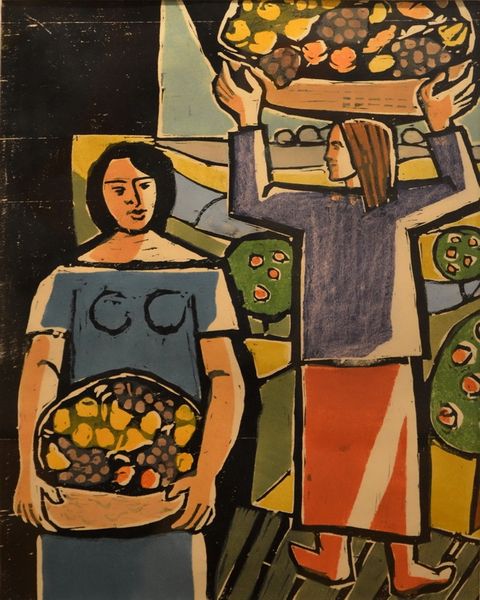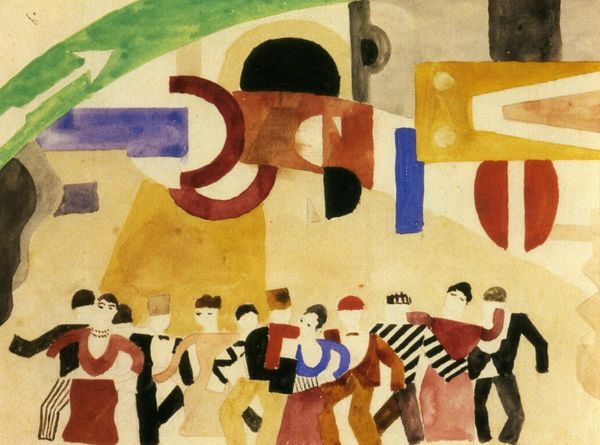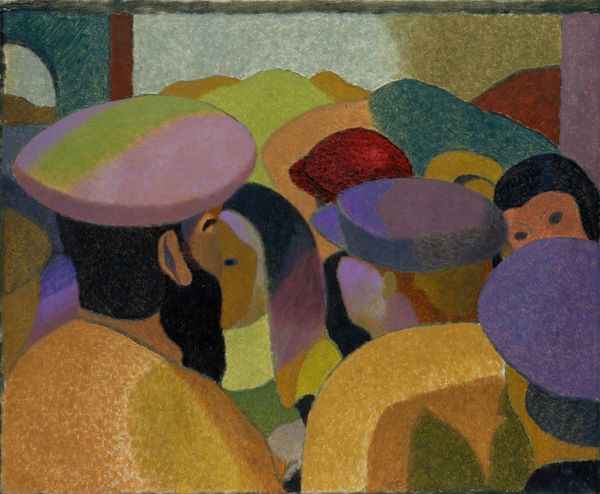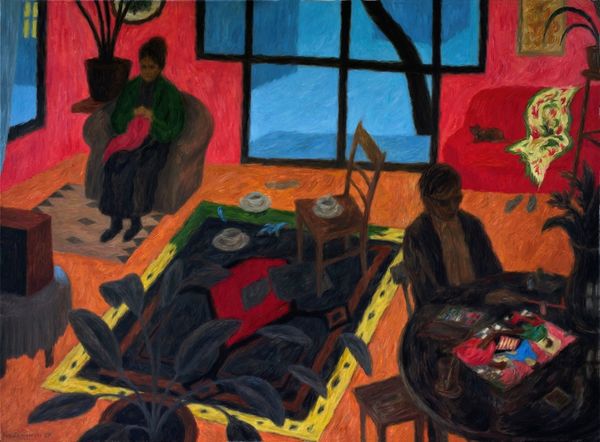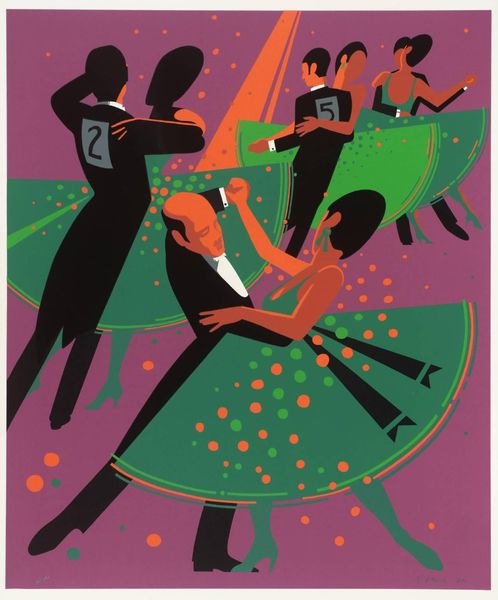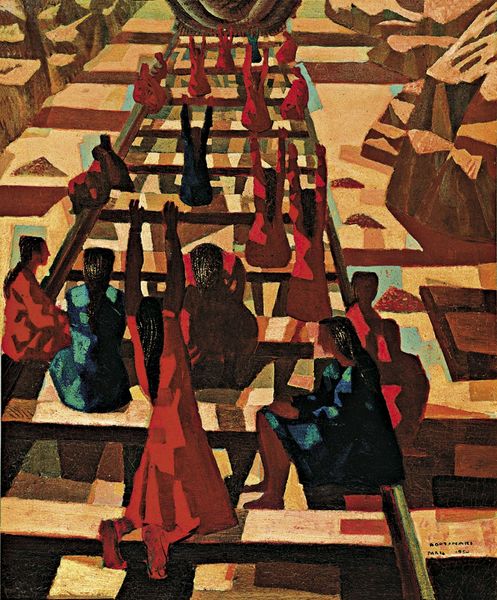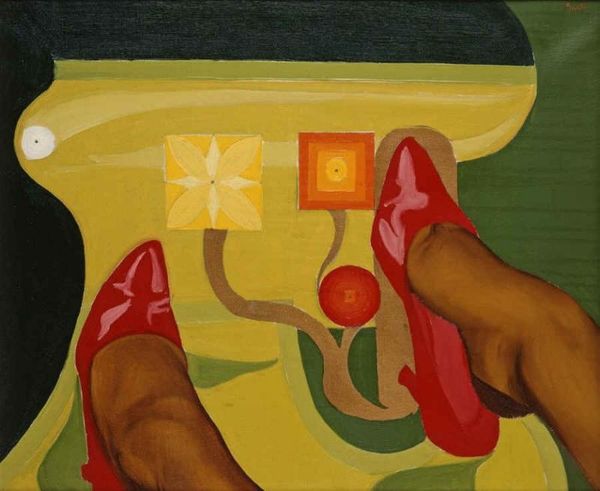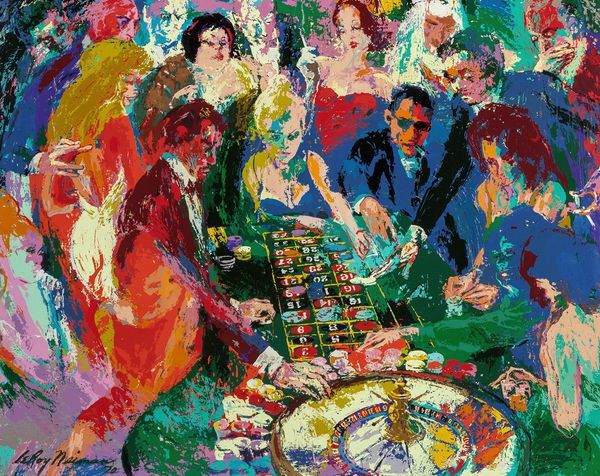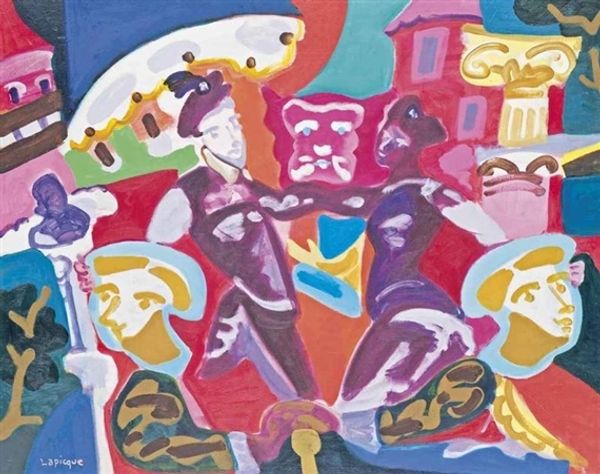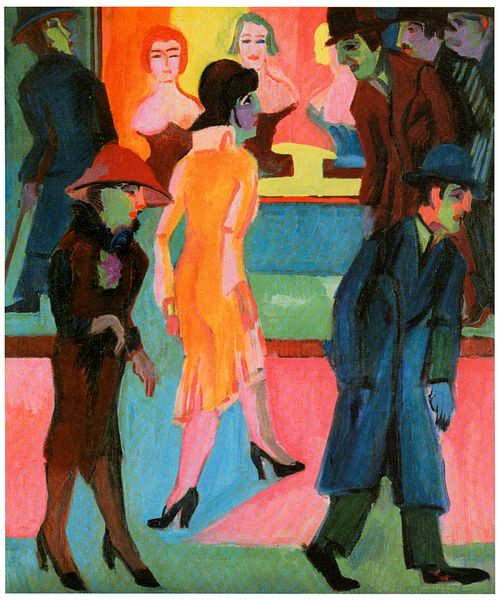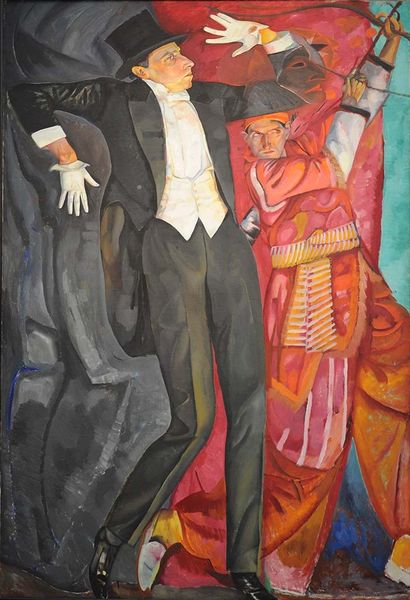
Dimensions: 150 x 150 cm
Copyright: Beatriz González,Fair Use
Curator: Standing before us is Beatriz González’s acrylic painting, “Señor presidente, qué honor estar con usted en este momento histórico,” created in 1987. Editor: The acidic colors strike me immediately, an almost sickly palette. The figures, rendered in such unnatural hues, feel…distant, theatrical, even. Curator: González’s work often tackles the socio-political landscape of Colombia, engaging with the very notion of historical representation and the construction of power dynamics within authoritarian regimes. Consider the title itself; there’s a clear element of satire. Editor: Absolutely, it rings hollow. Notice the rigid formality, undercut by the flattening effect of the pop-art style. There is that odd symbolic structure overhead - any thoughts on the symbolic reading of that? Curator: Knowing González’s background, her use of a seemingly light pop-art style actually provides commentary. This flattening and the exaggerated color choices are subversive techniques used to undermine the traditional heroic portrayal often found in official presidential portraits, suggesting an almost cartoonish quality to the image of power. Editor: And what about that strange arrangement of anthuriums, almost shielding the president? The anthurium itself is a striking symbol - associated with hospitality, but in some traditions also passion, boldness and seduction. Is it obscuring the truth or flaunting it? It also takes the shape of a shield, guarding him in a way, from perhaps truth? Curator: Perhaps, the artist suggests that political power, whilst on display and accessible, may have hidden layers and disguised incentives. Consider this work alongside other critical portrayals of leadership; it serves as a potent reminder to interrogate who benefits from 'historical moments' and who gets written out of them. Editor: Ultimately, these are symbols arranged to perform authority. By unsettling them, the artist seems to say that we must actively challenge the historical narratives sold to us, the art, history, and iconography presented. Curator: Agreed, by critically engaging with such imagery, González prompts us to actively analyze the messages we consume, challenging our own complicity in perpetuating oppressive regimes. Editor: The work certainly lingers in the mind long after one has looked away. Its boldness does what it should and plants the seed of critical thinking and cultural responsibility in our minds.
Comments
No comments
Be the first to comment and join the conversation on the ultimate creative platform.
